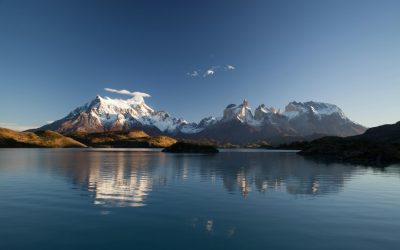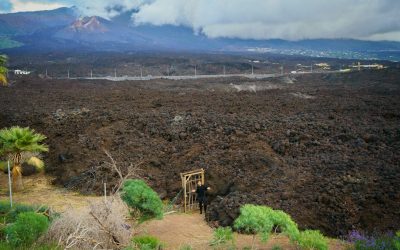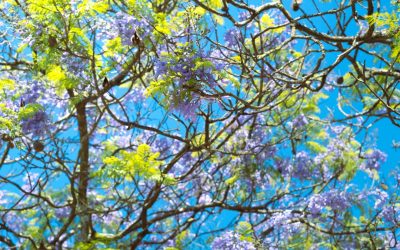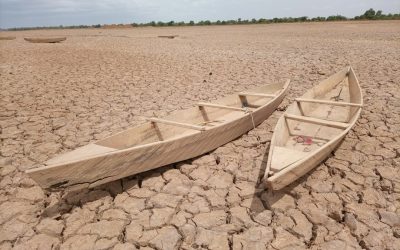Explore the World Through Geography, Natural Resources & Daily History
Clear, reliable and engaging guides that help you understand our planet — from UK geography education to global natural resources and On This Day history events.
Explore, discover, and learn about the wonders of our world! At Earth Site, we’re passionate about bringing geography, history, and science to life for curious minds of all ages. Whether you’re delving into historical events, uncovering the mysteries of the natural world, or seeking interactive resources, you’re in the right place.
Here, you can uncover the stories behind historical events, explore the natural wonders of our planet, and gain valuable insights into how the Earth’s systems shape our daily lives. From the towering peaks of mountain ranges to the far-reaching impacts of human innovation, we aim to make every topic both engaging and informative.
Start your journey of discovery with us today, and let’s make learning an adventure!
What We Cover
Earth Site brings together engaging and accessible educational content designed to help you understand the world, its history, and its natural systems.
🌍 Geography Education (UK & Worldwide)
We publish clear, easy-to-understand geography resources for students, teachers and curious learners. Our guides support geography education in the UK and cover physical geography, climate, ecosystems, population, and global development.
⛏️ Natural Resources & Environmental Geography
Explore detailed country profiles covering natural resources, mining, energy, geology and global environmental challenges. We show how nations manage minerals, water, land and ecosystems, and why these resources matter.
📅 On This Day in History
Every day has a story. Our On This Day history series features major events, anniversaries, traditions, and cultural milestones from around the world — with timelines, context, and fun facts.
TIMELINE
Discovering the Hidden Gems of Colombia: A Journey Through South America’s Best Kept Secret
Colombia, a country located in the northwestern region of South America, is a destination that has long been overlooked by travelers. However, in recent years, it has emerged as one of the most exciting and vibrant countries to visit. This blog post aims to uncover the treasures of Colombia and showcase why it should be your next travel destination. From its rich history and culture to its natural wonders and vibrant cities, Colombia offers a diverse range of experiences for every type of traveler. Whether you’re interested in exploring ancient ruins, hiking through lush rainforests, relaxing on pristine beaches, or immersing yourself in the vibrant local culture, Colombia has it all. Summary Colombia is a treasure trove of history, culture, natural wonders, vibrant cities, beaches, coffee regions, cuisine, festivals, art and music. The country’s rich history and culture are reflected in its architecture, museums, and traditions. From the Andes to the Amazon, Colombia’s natural wonders offer breathtaking landscapes and diverse wildlife. Bogotá, Medellín and Cartagena are vibrant cities with unique attractions, from street art to colonial architecture. Colombia’s Caribbean and Pacific coasts boast some of the best beaches in the world, with crystal-clear waters and white sand. The Rich History and Culture of Colombia Colombia’s history dates back thousands of years, with evidence of human habitation dating back to at least 12,000 BCE. The country was home to several indigenous cultures, including the Muisca, Tayrona, and Quimbaya civilizations. These ancient civilizations left behind a rich cultural heritage, which can still be seen today in the form of archaeological sites, traditional crafts, and indigenous communities. In the 16th century, Colombia...
Exploring China’s Rich Cultural Heritage: A Journey Through Time
China has a rich and diverse cultural history that spans thousands of years. From ancient dynasties to modern times, China has been home to a wide range of artistic, intellectual, and culinary traditions. Preserving this cultural heritage is of utmost importance, as it not only provides a window into the past, but also shapes the identity and values of the Chinese people today. Summary China’s cultural heritage is rich and diverse, spanning thousands of years. The ancient dynasties of China left behind impressive architectural and artistic achievements. Chinese literature and philosophy have had a profound impact on the world. Chinese cuisine and traditions are beloved around the globe. Chinese music, dance, festivals, and martial arts are all unique and fascinating aspects of the country’s culture. The Ancient Dynasties of China China’s history is marked by a series of dynasties, each with its own unique contributions and achievements. The Xia Dynasty, believed to be the first dynasty in Chinese history, laid the foundation for subsequent dynasties with its establishment of a centralized government and irrigation systems. The Shang Dynasty is known for its advancements in bronze casting and the development of a system of writing. The Zhou Dynasty introduced the concept of the Mandate of Heaven, which legitimized the rule of emperors based on their moral character. The Qin Dynasty is perhaps most famous for the construction of the Great Wall of China and the unification of various warring states into one empire. The Han Dynasty is considered a golden age in Chinese history, with advancements in science, technology, and arts. The Tang Dynasty is known for its flourishing poetry...
Unraveling the Mysteries of Propositional Logic: A Beginner’s Guide to Logical Reasoning
Propositional logic, also known as sentential logic or statement logic, is a branch of formal logic that deals with the study of propositions and their logical relationships. In propositional logic, propositions are statements that can be either true or false. These propositions are combined using logical connectives to form compound propositions, which can also be evaluated as true or false. The history of propositional logic can be traced back to ancient Greece, where philosophers like Aristotle and the Stoics developed systems of logic to analyze and evaluate arguments. However, it was not until the 19th and 20th centuries that propositional logic was formalized and studied extensively by mathematicians and logicians. Propositional logic plays a crucial role in critical thinking because it provides a framework for analyzing arguments and evaluating their validity. By breaking down complex arguments into simple propositions and examining their logical relationships, we can determine whether an argument is sound or fallacious. Propositional logic helps us identify logical fallacies, spot inconsistencies in reasoning, and make more informed decisions based on sound reasoning. Key Takeaways Propositional logic is a branch of logic that deals with propositions and their relationships. Propositional logic is important in critical thinking because it helps us to analyze arguments and identify fallacies. The components of propositional logic include propositions, connectives, and truth values. There are different types of propositional logic, including classical, intuitionistic, and modal. Propositional logic symbols and notations are used to represent propositions and their relationships. The Importance of Propositional Logic in Critical Thinking Propositional logic is an essential tool in critical thinking because it helps us analyze arguments and evaluate their...
Exploring the Hidden Gems of Burundi: A Journey Through the Heart of Africa
Nestled in the heart of East Africa, Burundi is a small landlocked country that often goes unnoticed by travelers. However, this hidden gem is a treasure trove of natural wonders, rich culture, and warm hospitality. Located between Rwanda, Tanzania, and the Democratic Republic of Congo, Burundi has a tumultuous history but is now emerging as an up-and-coming travel destination. Burundi’s history dates back centuries, with influences from various African kingdoms and colonial powers. The country gained independence from Belgium in 1962 and has since faced political instability and conflict. Despite these challenges, Burundi has managed to preserve its unique cultural heritage and natural beauty. Key Takeaways Burundi is a hidden gem in Africa with rich culture, natural wonders, historical sites, and vibrant markets. The country boasts of mountains, lakes, and wildlife, making it a perfect destination for nature lovers. Burundi’s friendly and hospitable people make it a great place to experience local cuisine and participate in traditional festivals. Despite facing development challenges, Burundi has triumphed in preserving its heritage and promoting adventure activities like trekking and rafting. Planning a trip to Burundi requires careful consideration, but the journey promises to be a memorable one with tips and recommendations. Discovering the Rich Culture and Heritage of Burundi Burundi is a country with a vibrant cultural scene. Traditional dance and music play a significant role in the daily lives of its people. The Intore dance, performed by men and women dressed in colorful costumes, is a captivating display of agility and rhythm. Traditional drumming is also an integral part of Burundian culture, with the Gishora Drum Sanctuary being a must-visit for...
Discovering Chile: A Journey Through the Land of Contrasts
Chile, located on the western edge of South America, is a country known for its stunning natural landscapes, rich cultural heritage, and diverse range of activities for travelers. With its long coastline, towering mountains, and unique geography, Chile offers a wide variety of experiences for visitors. From the driest desert in the world to the icy fjords of Patagonia, Chile is a land of contrasts that never fails to captivate those who visit. Chile’s geography is incredibly diverse, with the Andes Mountains running along its eastern border and the Pacific Ocean stretching along its western coast. This unique geography has given rise to a wide range of climates and ecosystems within the country. In the north, you’ll find the Atacama Desert, which is considered the driest place on earth. In contrast, the southern region of Patagonia is characterized by its glaciers, fjords, and abundant wildlife. Chilean culture is a blend of indigenous traditions and Spanish colonial influences. The country has a rich history that dates back thousands of years, with indigenous groups such as the Mapuche playing a significant role in shaping Chilean identity. The influence of Spanish colonialism can be seen in the architecture, language, and customs of the country. Chilean culture is also known for its vibrant music and dance traditions, with styles such as cueca and cumbia being popular throughout the country. Summary Chile is a land of contrasts, with natural wonders, rich cultural heritage, modern cities, and thrilling adventure sports. Exploring Chile’s natural wonders, from the Atacama Desert to Patagonia, is a must-do for nature lovers. Discovering Chile’s rich cultural heritage, including its indigenous cultures...
Chad: A Journey Through the Heart of Africa’s Hidden Gem
Chad, located in Central Africa, is a landlocked country with a rich cultural heritage and a fascinating history. It is bordered by Libya to the north, Sudan to the east, the Central African Republic to the south, Cameroon and Nigeria to the southwest, and Niger to the west. Chad has been inhabited for thousands of years and has been influenced by various empires and civilizations throughout its history. Chad’s cultural diversity is one of its greatest assets. The country is home to over 200 different ethnic groups, each with its own unique traditions, customs, and languages. The largest ethnic groups include the Sara, Arab, Kanembu, and Ouaddai. These diverse ethnic groups contribute to the vibrant cultural tapestry of Chad. Chad has also played a significant role in the African continent. It has been a crossroads for trade routes and has been influenced by various empires, including the Kanem-Bornu Empire and the Ouaddai Empire. Chad gained independence from France in 1960 and has since become an important player in regional politics and security. Summary Chad is a country with a rich culture and history. Natural wonders in Chad include Lake Chad and the Ennedi Plateau. Chad is home to diverse ethnic groups and traditions. N’Djamena is a vibrant capital city worth exploring. Colonialism has had a lasting impact on modern society in Chad. Discovering the Natural Wonders of Chad: From Lake Chad to the Ennedi Plateau One of Chad’s most significant natural wonders is Lake Chad, which is located in the western part of the country. Lake Chad is one of Africa’s largest lakes and is an important water source...
Exploring the Impact of Carbon (C) Emissions on the Environment and Our Health
Carbon emissions refer to the release of carbon dioxide (CO2) and other greenhouse gases into the atmosphere. These emissions are primarily caused by human activities such as burning fossil fuels for energy, deforestation, and industrial processes. Discussing carbon emissions and their effects on the environment is crucial because they are the main driver of climate change, air pollution, water and soil pollution, and biodiversity loss. Understanding the link between carbon emissions and these environmental issues is essential for developing effective strategies to mitigate their impacts. Summary Carbon emissions contribute to climate change, air pollution, water and soil quality degradation, and biodiversity loss. Reducing carbon emissions is crucial for sustainable development and a healthier environment. Policy responses and technological solutions are necessary to reduce carbon emissions on a large scale. Individual actions, such as reducing energy consumption and using public transportation, can also make a difference in reducing carbon emissions. Urgent action is needed to address carbon emissions and ensure a better future for the planet and its inhabitants. Understanding the Link Between Carbon Emissions and Climate Change The greenhouse effect is a natural process that occurs when certain gases in the Earth’s atmosphere trap heat from the sun, preventing it from escaping back into space. This process is essential for maintaining a habitable temperature on Earth. However, human activities have significantly increased the concentration of greenhouse gases in the atmosphere, primarily through the burning of fossil fuels. This excess of greenhouse gases, including carbon dioxide, methane, and nitrous oxide, enhances the greenhouse effect and leads to global warming. Carbon emissions contribute to climate change by increasing the concentration of...
Unleashing the Power of Logic: How to Improve Your Critical Thinking Skills
Critical thinking is a vital skill that is essential in both personal and professional life. It involves the ability to analyze and evaluate information, make logical and reasoned judgments, and solve problems effectively. In today’s complex and fast-paced world, critical thinking is more important than ever. It allows individuals to navigate through the vast amount of information available to them, make informed decisions, and adapt to new situations. Key Takeaways Critical thinking involves analyzing information and making reasoned judgments. Logic is essential in critical thinking to ensure sound reasoning and avoid fallacies. Biases and assumptions can cloud our thinking, so it’s important to identify and challenge them. A systematic approach to problem-solving involves breaking down complex issues into manageable parts. Practice is key to improving analytical skills, and effective communication is crucial in presenting arguments. Understanding the Basics of Critical Thinking Critical thinking can be defined as the process of actively and skillfully conceptualizing, applying, analyzing, synthesizing, and evaluating information to reach a conclusion or solve a problem. It involves being open-minded, asking questions, and challenging assumptions. Critical thinkers are able to identify biases and assumptions in their thinking, recognize logical fallacies, and make well-reasoned judgments. Some of the key characteristics of critical thinking include being objective, logical, rational, and reflective. Critical thinkers are able to separate fact from opinion, consider multiple perspectives, and weigh the evidence before making a decision. They are also able to think independently and creatively, using their own judgment rather than relying solely on the opinions of others. Critical thinking is crucial in decision-making because it helps individuals make informed choices based on evidence...
Exploring the Rich Culture and History of Central African Republic
The Central African Republic, often referred to as CAR, is a landlocked country located in Central Africa. It is bordered by Chad to the north, Sudan to the northeast, South Sudan to the east, the Democratic Republic of the Congo and the Republic of the Congo to the south, and Cameroon to the west. With a population of approximately 4.7 million people, CAR is known for its diverse ethnic groups and languages spoken. The country is home to over 80 different ethnic groups, each with its own unique culture and traditions. The main languages spoken in CAR are French and Sango, which is a local language derived from Ngbandi. The diversity of cultures and traditions found in CAR is a testament to the rich history and heritage of the country. Summary Central African Republic is a diverse country with a rich culture that is expressed through traditional arts and crafts, music and dance, cuisine, festivals, and religion. The country has a complex history that spans pre-colonial times to the present, and its architecture and monuments are a testament to its rich heritage. The local cuisine is a delicious blend of African and French influences, and the festivals and celebrations are a colourful display of local traditions. The country is home to a treasure trove of biodiversity, including wildlife and natural wonders, and its contemporary culture and society face both challenges and opportunities as a developing nation. Overall, Central African Republic is a fascinating and vibrant country that offers a unique window into African culture and history. The History of Central African Republic: From Pre-colonial Times to the Present The...
Exploring the Beauty of Canada: A Journey through the Land of Maple Leaves
Canada, the second-largest country in the world, is known for its stunning natural landscapes, vibrant cities, and rich cultural heritage. Located in North America, Canada is bordered by the Atlantic Ocean to the east, the Pacific Ocean to the west, and the Arctic Ocean to the north. With a population of over 37 million people, Canada is a diverse and multicultural country with a rich history and unique culture. Canada’s history dates back thousands of years, with Indigenous peoples inhabiting the land long before European settlers arrived. The country has a strong connection to its Indigenous heritage and strives to preserve and celebrate this cultural heritage. In addition to its Indigenous history, Canada was colonized by European powers, primarily France and Britain. This European influence can be seen in Canadian art, architecture, and cuisine. Canada is a popular travel destination for many reasons. Its vast and diverse landscapes offer endless opportunities for outdoor activities such as hiking, skiing, and wildlife watching. The country is home to numerous national parks and natural attractions that showcase its natural beauty, including Niagara Falls, Banff National Park, and the Rocky Mountains. Additionally, Canada’s cities are known for their vibrant culture, unique experiences, and friendly locals. Summary Canada is known as the Land of Maple Leaves, with its iconic symbol being the maple leaf. Canada boasts natural wonders such as Niagara Falls, the Rocky Mountains, and the Northern Lights. Vibrant cities like Toronto, Vancouver, and Montreal offer diverse cultural experiences and attractions. Canada’s rich cultural heritage can be explored through museums, historic sites, and festivals. Wildlife enthusiasts can experience Canada’s diverse wildlife in places...
Unlocking the Secrets of Modular Arithmetic: A Beginner’s Guide to Solving Complex Equations
Modular arithmetic is a branch of mathematics that deals with the remainder when one number is divided by another. It is a fundamental concept in number theory and has applications in various fields such as cryptography, computer science, and physics. In modular arithmetic, numbers “wrap around” after reaching a certain value called the modulus. The history of modular arithmetic can be traced back to ancient civilizations such as the Egyptians and Babylonians, who used modular arithmetic to solve problems related to timekeeping and calendar systems. However, the formal development of modular arithmetic as a mathematical discipline can be attributed to Carl Friedrich Gauss in the late 18th century. Gauss introduced the concept of congruence, which forms the basis of modular arithmetic. Key Takeaways Modular arithmetic is a type of arithmetic that deals with remainders. It is useful in solving equations and cryptography. Modular arithmetic has applications in computer science and number theory. Advanced techniques can be used to solve complex equations. Real-world examples of modular arithmetic include credit card validation and internet security. Understanding the Basics of Modular Arithmetic In modular arithmetic, there are four basic operations: addition, subtraction, multiplication, and division. These operations are performed on the remainders obtained when numbers are divided by a modulus. For example, in modulo 7 arithmetic, 3 + 5 = 1 because the remainder of 3 divided by 7 is 3 and the remainder of 5 divided by 7 is 5, and their sum is 8 which has a remainder of 1 when divided by 7. Modular arithmetic also has several properties that make it unique. These properties include reflexivity (a ≡...
Discovering the Hidden Gems of Burkina Faso: Exploring the Rich Culture and Natural Beauty of West Africa
Burkina Faso, a landlocked country in West Africa, is often overlooked by travelers in favor of its more well-known neighbors. However, this hidden gem has much to offer for those willing to explore its rich cultural heritage, natural beauty, vibrant music and dance scene, delicious cuisine, and friendly people. From ancient Mossi Kingdoms to stunning waterfalls and wildlife-filled national parks, Burkina Faso is a destination that will surprise and delight visitors. Key Takeaways Burkina Faso is a hidden gem in West Africa with rich cultural heritage and natural beauty. The country boasts stunning waterfalls, wildlife, vibrant music and dance scene, and delicious cuisine. Visitors can expect a warm welcome from the friendly people of Burkina Faso. Exploring the ancient Mossi Kingdoms and trekking through the Sahel offer a journey through history and desert landscapes. The lively markets and colorful festivals make Burkina Faso a shopper’s paradise and a joyful experience. Exploring the Rich Cultural Heritage of Burkina Faso Burkina Faso is home to a diverse range of ethnic groups, each with their own unique customs and rituals. Traditional practices are deeply ingrained in the fabric of Burkinabe society and play a significant role in daily life. From birth ceremonies to initiation rites and funeral rituals, these customs are passed down through generations and serve as a way to connect with ancestors and maintain cultural identity. One of the most iconic symbols of Burkina Faso’s culture is the mask. Masks hold great significance in traditional ceremonies and performances, representing spirits or ancestors and serving as a means of communication between the human and spiritual realms. The craftsmanship and artistry that...











